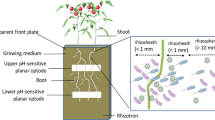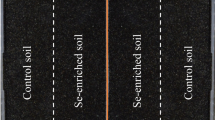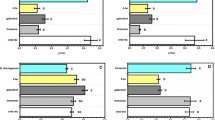Abstract
THE activities of the nodule, and particularly the excretion of nitrogenous compounds from the nodule into the medium, are largely dependent upon the supply of air to the roots. The quantity of excreted nitrogenous compounds is the greater the larger the culture flask. This fact has been clearly demonstrated by our experiments with sterile cultures of inoculated peas in quartz sand. The results also showed that the rate of excretion is proportionally highest at an early stage of development of the plants when the nodules are still quite young. Hence it can be concluded that the passage of the nitrogen compounds into the sand actually is due to excretion and not to a decomposition of the nodule proteins.
This is a preview of subscription content, access via your institution
Access options
Subscribe to this journal
Receive 51 print issues and online access
$199.00 per year
only $3.90 per issue
Buy this article
- Purchase on Springer Link
- Instant access to full article PDF
Prices may be subject to local taxes which are calculated during checkout
Similar content being viewed by others
References
Virtanen, A. I., V. Hausen, S., and Karström, H., Biochem. Z., 258, 106, 1933. NATURE, 131, 534, April 15, 1933.
Virtanen, A. I., Norlund, M., and Hollo, E., Biochem. J., 28, 796; 1934.
Author information
Authors and Affiliations
Rights and permissions
About this article
Cite this article
VIRTANEN, A., v. HAUSEN, S. Excretion of Nitrogenous Compounds from the Root Nodules of Leguminous Plants. Nature 135, 184–185 (1935). https://doi.org/10.1038/135184b0
Issue Date:
DOI: https://doi.org/10.1038/135184b0
This article is cited by
-
Past, present and future of organic nutrients
Plant and Soil (2012)
-
Zur Abgabe von Aminosäuren und Amiden an das Nährmedium durch die Wurzeln von Helianthus annuus L.
Planta (1957)
-
Excretion of vitamin C during germination of leguminous seeds
Proceedings / Indian Academy of Sciences (1951)
-
Root interactions of plants
The Botanical Review (1937)
Comments
By submitting a comment you agree to abide by our Terms and Community Guidelines. If you find something abusive or that does not comply with our terms or guidelines please flag it as inappropriate.



